A load cell (or loadcell) is a transducer which converts force into a measurable electrical output. Although there are many varieties of force sensors, strain gauge load cells are the most commonly used type.
Except for certain laboratories where precision mechanical balances are still used, strain gauge load cells dominate the weighing industry. Pneumatic load cells are sometimes used where intrinsic safety and hygiene are desired, and hydraulic load cells are considered in remote locations, as they do not require a power supply. Strain gauge load cells offer accuracies from within 0.03% to 0.25% full scale and are suitable for almost all industrial applications.
How does a load cell work?
A load cell works by converting mechanical force into digital values that the user can read and record. The inner working of a load cell differs based on the load cell that you choose. There are hydraulic load cells, pneumatic load cells, and strain gauge load cells. Strain gauge load sensors are the most commonly used among the three. Strain gauge load cells contain strain gauges within them that send up voltage irregularities when under load. The degree of voltage change is covered to digital reading as weight.When to use a load cell?
A load cell measures mechanical force, mainly the weight of objects. Today, almost all electronic weighing scales use load cells for the measurement of weight. They are widely used because of the accuracy with which they can measure the weight. Load cells find their application in a variety of fields that demand accuracy and precision. There are different classes to load cells, class A, class B, class C & Class D, and with each class, there is a change in both accuracy and capacity.
Load Cell Types
Load cell designs can be distinguished according to the type of output signal generated (pneumatic, hydraulic, electric) or according to the way they detect weight (bending, shear, compression, tension, etc.)
Hydraulic load cells
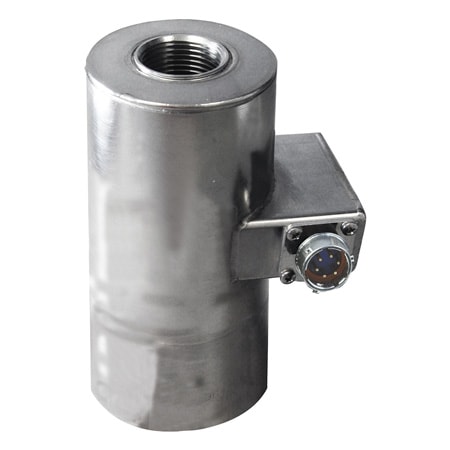 Miniature load cellHydraulic cells are force -balance devices, measuring weight as a change in pressure of the internal filling fluid. In a rolling diaphragm type hydraulic force sensors, a load or force acting on a loading head is transferred to a piston that in turn compresses a filling fluid confined within an elastomeric diaphragm chamber.
Miniature load cellHydraulic cells are force -balance devices, measuring weight as a change in pressure of the internal filling fluid. In a rolling diaphragm type hydraulic force sensors, a load or force acting on a loading head is transferred to a piston that in turn compresses a filling fluid confined within an elastomeric diaphragm chamber.As force increases, the pressure of the hydraulic fluid rises. This pressure can be locally indicated or transmitted for remote indication or control. Output is linear and relatively unaffected by the amount of the filling fluid or by its temperature.
If the load cells have been properly installed and calibrated, accuracy can be within 0.25% full scale or better, acceptable for most process weighing applications. Because this sensor has no electric components, it is ideal for use in hazardous areas.
Typical hydraulic load cell applications include tank, bin, and hopper weighing. For maximum accuracy, the weight of the tank should be obtained by locating one force sensor at each point of support and summing their outputs.
Pneumatic load cells
Pneumatic load cells also operate on the force-balance principle. These devices use multiple dampener chambers to provide higher accuracy than can a hydraulic device. In some designs, the first dampener chamber is used as a tare weight chamber.Pneumatic load cells are often used to measure relatively small weights in industries where cleanliness and safety are of prime concern.
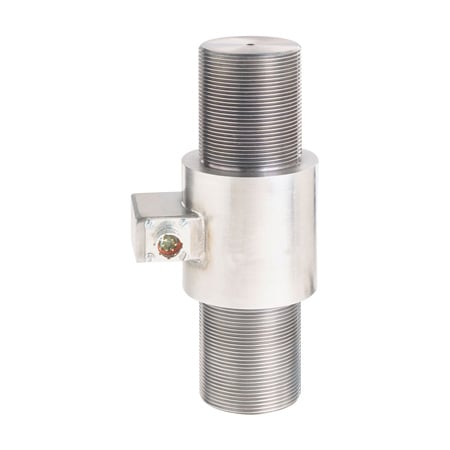 Miniature load cell
Miniature load cellThe advantages of this type of load cell include their being inherently explosion proof and insensitive to temperature variations. Additionally, they contain no fluids that might contaminate the process if the diaphragm ruptures. Disadvantages include relatively slow speed of response and the need for clean, dry, regulated air or nitrogen.
Strain-gauge load cell
Strain gauge load cells are a type of load cell where a strain gauge assembly is positioned inside the load cell housing to convert the load acting on them into electrical signals. The weight on the load cell is measured by the voltage fluctuation caused in the strain gauge when it undergoes deformation.The gauges themselves are bonded onto a beam or structural member that deforms when weight is applied. Modern load cells have 4 strain gauges installed within them to increase the measurement accuracy. Two of the gauges are usually in tension, and two in compression, and are wired with compensation adjustments.
When there is no load on the load cell, the resistances of each strain gauge will be the same. However, when under load, the resistance of the strain gauge varies, causing a change in output voltage. The change in output voltage is measured and converted into readable values using a digital meter.
Piezoresistive load cell
Similar in operation to strain gauges, piezoresistive force sensors generate a high level output signal, making them ideal for simple weighing systems because they can be connected directly to a readout meter. The availability of low cost linear amplifiers has diminished this advantage, however. An added drawback of piezoresistive devices is their nonlinear output.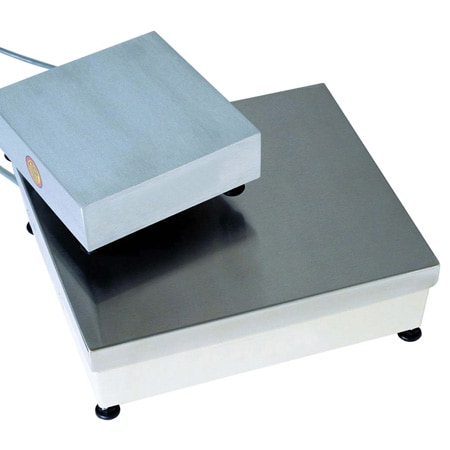 Miniature load cell
Miniature load cell
Inductive and reluctance load cells
Both of these devices respond to the weight-proportional displacement of a ferromagnetic core. One changes the inductance of a solenoid coil due to the movement of its iron core; the other changes the reluctance of a very small air gap.Magnetostrictive load cells
The operation of this force sensor is based on the change in permeability of ferromagnetic materials under applied stress. It is built from a stack of laminations forming a load-bearing column around a set of primary and secondary transformer windings. When a force is applied, the stresses cause distortions in the flux pattern, generating an output signal proportional to the applied load. This is a rugged sensor and continues to be used for force and weight measurement in rolling mills and strip mills.Weighing load cell applications
Load cells represented the first major design change in weighing technology. In today's processing plants, electronic force sensors are preferred in most applications, although mechanical lever scales are still used if the operation is manual and the operating and maintenance personnel prefer their simplicity.In this page you find a weighing system design with load cells.
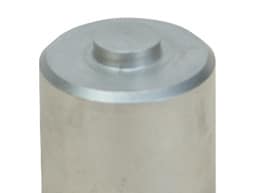
 CHINESE
CHINESE ENGLISH
ENGLISH



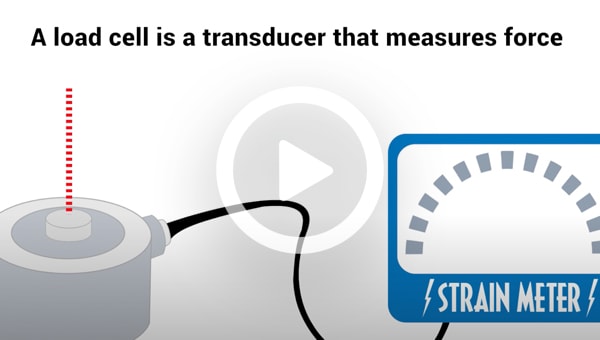




 Skype Chat
Skype Chat Mail inquiry
Mail inquiry QQ online
QQ online